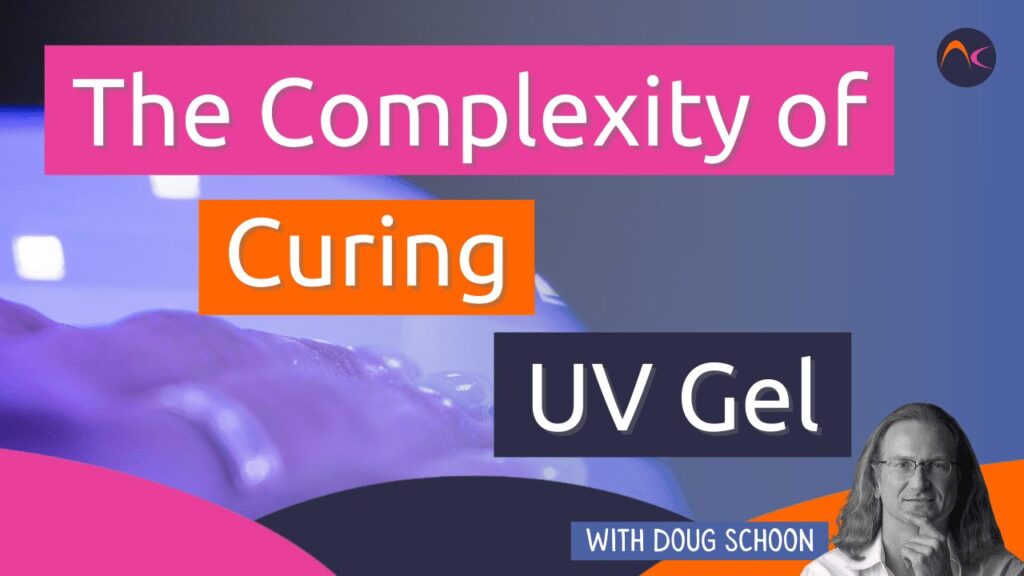I’ve noticed that many nail technicians tend to over simplify the UV curing process for nail coatings and this has created misunderstandings. In my opinion, UV cured nail coatings are the most technically sophisticated and complex products in the beauty industry. Many underestimate the various aspects of UV curing including the nail lamps. They don’t appreciate how many factors influence cure and instead over simplify everything including “wattage”, which is not as important as most believe. In fact, if you buy a lamp just because of its wattage, you are likely to be disappointed.
There are three types of cure for UV nail coatings: under-cure, over-cure and proper cure. Here is some information that you need to know to achieve “proper cure” and avoid the other possibilities. Curing is NOT all about the wattage. Don’t be fooled by those who just want to see you a nail lamp. Wattage is “power consumption” and not “UV output”. The second mistake that some make is to focus on the range of wavelengths emitted and is only another part of all that must be considered to ensure a UV gel properly cures.
What’s Needed for Proper UV Curing?
In my scientific opinion, the best way is to ensure a proper cure is to consistently apply a thin layer of UV gel with the correct thickness and then cure that thin layer for the proper length of time, using a nail lamp that emits the correct UV wavelengths needed to efficiently activate the photointiators in the UV gel. ALSO, those wavelengths can have neither too high nor too low of an intensity for the UV curing product. Too high of an intensity causes over-curing; too low of an intensity causes under-curing.
Besides the wavelength and intensity, even the DESIGN of the lamp is very important. For instance, the distance between the nail plates and the bulbs makes a very big difference in curing. Very small changes in this distance can have big consequences on curing. Most people don’t think about the electronics inside the lamp. The electric components drive the bulbs to create UV. These components influence UV intensity and different lamps have different components. If the exact same UV bulbs are used in two different brands of UV nail lamp, the bulbs can produce widely different UV intensities. It’s important to note that old UV bulbs should be replaced with the same type and model of UV bulb. Fluorescent style bulbs should generally be changed 2-4 times per year depending on how often the nail lamps are used.
Too few understand how important the design of the nail lamp is in curing. The positioning of the bulbs and even type of interior reflector material used are VERY important factors that influence curing. This is why it is wrong to assume that only wattage is important, when it is the least important of the factors. The most confusing of all, is that many are fooled when the UV products harden. They incorrectly assume that hardening means properly cured, but in many cases they are not. UV nail coatings will harden when they cure more than 50%. However, to obtain the best properties and avoid causing skin sensitivities, these coatings should be sure to around 90%. So, there are many clients walking around with under cured enhancements, which are more prone to service breakdown and more likely to cause adverse skin reactions, especially for the nail technicians who are repeatedly exposed to partially cured UV gel dust and filings.
How do I know this information is correct? I have spent many years developing some of the leading UV nail products in the world and I am also one of the top scientific experts on UV nail lamps. These are the facts as I know them. This information is important because too many nail professionals don’t realise that many of their service breakdown problems are probably due to improper cure. Improper cure can cause everything from cracking, breaking, shattering, lifting, pitting, discoloration, bubbles and onychosis to adverse skin reactions. In my opinion, improper curing is a leading cause of skin sensitivity, producing symptoms such as skin redness, itching, water blisters, etc. These are completely avoidable and would not happen if these coatings were properly applied and cured. In short, don’t use a UV nail lamp (either LED or fluorescent style) unless it is recommended by the UV curing product manufacturers and then always cure these products exactly as directed.


